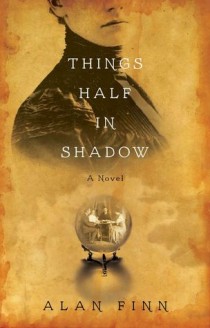 Whitley’s review of Things Half in Shadow by Alan Finn.
Whitley’s review of Things Half in Shadow by Alan Finn.
Postbellum America makes for a haunting backdrop in this historical and supernatural tale of moonlit cemeteries, masked balls, cunning mediums, and terrifying secrets waiting to be unearthed by an intrepid crime reporter.
The year is 1869, and the Civil War haunts the city of Philadelphia like a stubborn ghost. Mothers in black continue to mourn their lost sons. Photographs of the dead adorn dim sitting rooms. Maimed and broken men roam the streets. One of those men is Edward Clark, who is still tormented by what he saw during the war. Also constantly in his thoughts is another, more distant tragedy–the murder of his mother at the hands of his father, the famed magician Magellan Holmes…a crime that Edward witnessed when he was only ten.
Now a crime reporter for one of the city’s largest newspapers, Edward is asked to use his knowledge of illusions and visual trickery to expose the influx of mediums that descended on Philadelphia in the wake of the war. His first target is Mrs. Lucy Collins, a young widow who uses old-fashioned sleight of hand to prey on grieving families. Soon, Edward and Lucy become entwined in the murder of Lenora Grimes Pastor, the city’s most highly regarded–and by all accounts, legitimate–medium, who dies mid-seance. With their reputations and livelihoods at risk, Edward and Lucy set out to find the real killer, and in the process unearth a terrifying hive of secrets that reaches well beyond Mrs. Pastor.
This story had some wonderful atmosphere to it and a perfect balance of light paranormal aspects, but I was let down by the mystery side.
First of all, I really did enjoy the setting to this novel. It’s right after the Civil War in a time when Spiritualism was very much in vogue. That’s a fascinating period of history that doesn’t get enough attention. (Well, I say that about most of history, but it’s still always true.) The book does a good job of setting the scene not only in physical descriptions but also in tone and mood. I had very little difficulty settling into this quasi-middle-upper-class society’s rhythms, and it all felt very natural.
I also greatly enjoyed the paranormal aspects, the ghosts and séances. They were prominent, but not overwhelming. A fixture of the plot but while still allowing the story to stay grounded in “the real world.” Now, I love fantasy as much as the next girl, but sometimes you want a little more urban in your urban fantasy and it’s hard when books can’t pick a level of presence and stick to it. This book does not have that problem. I also loved the mixing of slight-of-hand “magic” with real paranormal aspects.
The characters were fairly solid. Edward was bland, but he’s a first person MC and I say that about all first person MCs. He did at least have an interesting back story and situation; dramatic without being melodramatic. Lucy…well, Lucy grew on me after a while. I didn’t like her corrosive nature at the start; she reminded me too much of the “rude bad boy” love interests. Granted, she had good reason to be upset with Edward, but she got downright cruel at points. Still, those points smoothed out eventually and we were left with just a lovably brash and forward character. But the one that took the cake for me (and I don’t think she was supposed to) was Edward’s fiancé, Violet. I felt bad for her throughout the novel, so sweet and trusting and loyal to Edward, and the relationship they had seemed much more natural and healthy than the forced romantic ‘tension’ between Edward and Lucy.
And, now, the downfall. The plot. The book is billed as a murder mystery and much time is spent on trying to figure out who killed Lenora. And by “trying to figure out” I mean “let’s just asked a bunch of people point-blank questions and then take them at their word, because obviously people will offer up their secrets when confronted and then never lie.” Yeah, that’s the extent of the “investigation” in this novel. They just make the rounds of the same cast of characters, asking questions. If something doesn’t add up, they go back to the same people and as more questions again. And that just didn’t hold my interest for long. I was hoping for a bit more investigating. Maybe some sly questions to neighbors, or eavesdropping, or records-searching. Just…something. It made the middle section of the book drag on interminably.
Also, there are two big parts of the mystery that go largely ignored throughout the whole novel. Both of them relate to a shadowy, Illuminati-style group that’s pulling strings in the background. I feel no guilt in telling you that, because even though you don’t find out about this group until the end of the book…they have no impact. At all. They’re just sequel bait. I can tell you that there is a shadowy group upfront and it does not change the novel, because all clues pointing to them are stoutly ignored by the characters. Conspicuously ignored, even, considering every other “clue” is talked about ad-nauseum. I really wanted to learn more about these people, since they seemed extremely interesting, but instead I got an anticlimactic non-answer.
All in all, while it had its high points, this book wasn’t my cup of tea due to the pacing and the intentional holding back of things for sequels. However, I can see how others who enjoy a more character-driven plot would greatly enjoy it.
Rating: 3 out of 5
This title is available from Gallery Books. You can purchase it here or here in e-format. This book was provided by the publisher in exchange for an honest review.

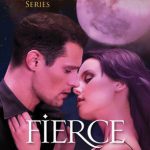
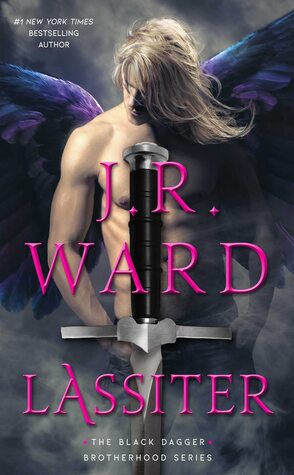
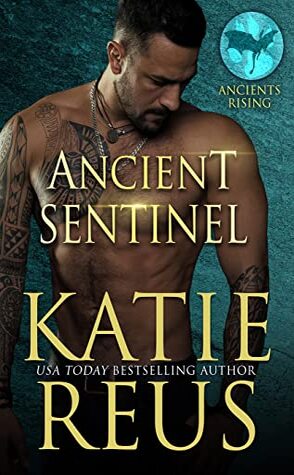
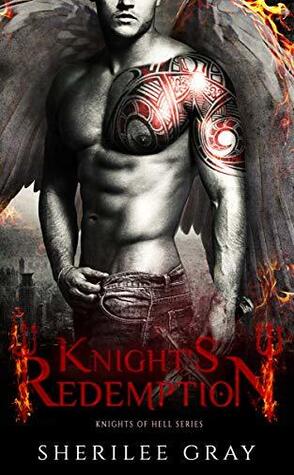
Sounds interesting!